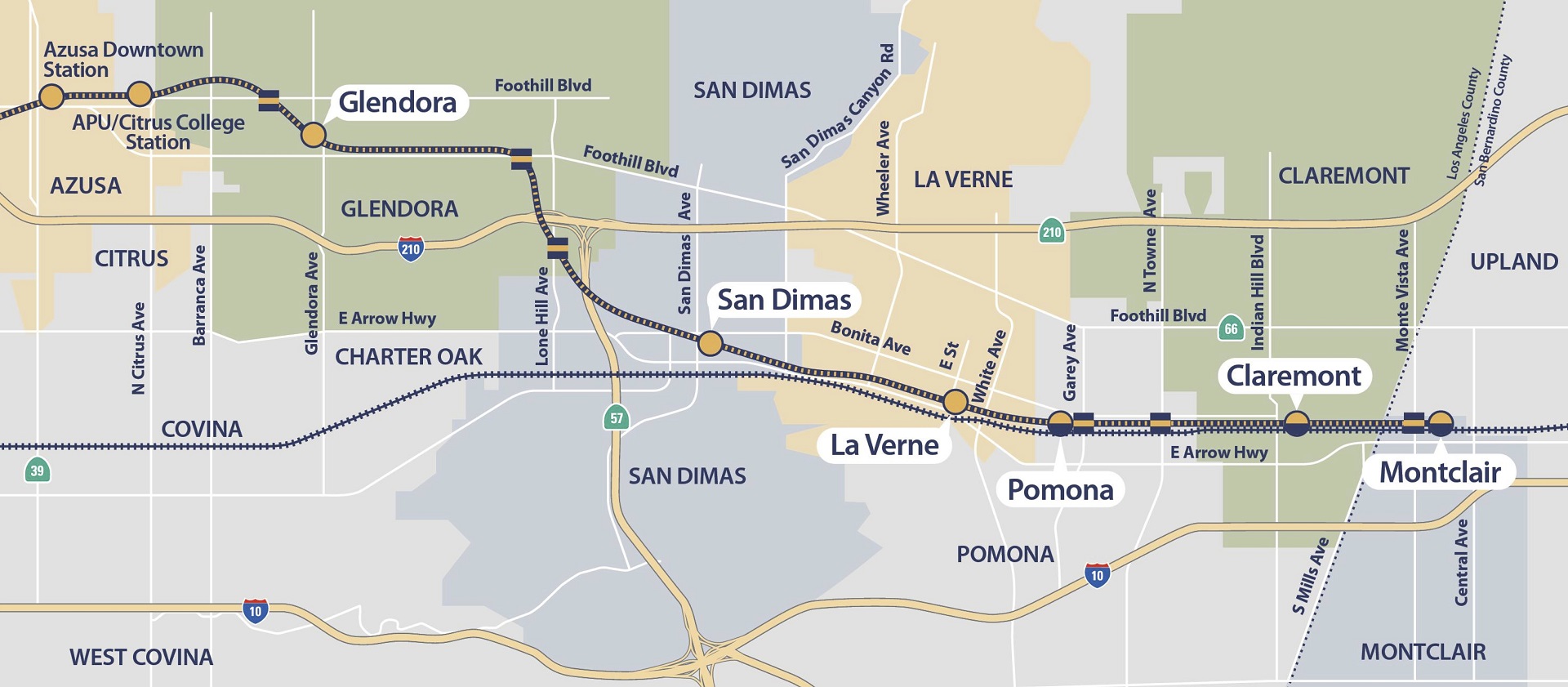Los Angeles County is a big place, with lots of urban centers to connect with rapid rail transit. Funding is limited for these expensive trains, despite the passage of two recent sales tax increases and two others passed in 1980 and 1990 respectively.
So why is the region spending these limited dollars on two rail lines in the mostly suburban, auto-oriented, low-density San Gabriel Valley? The issue is now front-and-center with the June approval of a $1.4 billion extension of the Foothill Gold Line light rail to Montclair.
The problem is that the line dovetails with an existing Metrolink line, which is a diesel train for commuters into downtown Los Angeles. This map tells the story:

The existing Gold Line extension to Azusa already is cannibalizing nearby Metrolink service, as Urbanize LA reported:
In a report prepared for the Planning and Programming Committee, Metro staff notes that there has been a precipitous drop in ridership at a nearby station on the San Bernardino Metrolink line. In the year since the completion of the extension, which Metro calls the Gold Line Extension Phase 2A, boardings at Covina station have fallen 25 percent, despite being several miles from the Gold Line terminus at Azusa Pacific University.
Even more worrying for the future of Metrolink’s highest ridership line is the Gold Line Extension Phase 2B, which will extend the light rail line from Glendora to Claremont, and with a potential contribution from the County of San Bernardino, across the County line into Montclair. Three of the new stations, in the cities of Pomona, Claremont and Montclair, will be built in the Metrolink right-of-way and have stations directly adjacent to their commuter rail counterparts, offering perhaps an alluring alternative to the existing service. While Gold Line trains will take about 15 minutes longer to travel from Montclair to Union Station, they will be far cheaper and offer service every 7-12 minutes for most of the day.
I discussed this issue with KPCC radio recently, explaining that the reason for this extra rail service is simply politics. To secure two-thirds voter approval on the recent sales tax measures for transit, local leaders had to essentially buy off San Gabriel Valley leaders with a gold-plated rail line promise, even though the region doesn’t have the ridership to justify the expense.
That’s not to say that duplicative rail service is a bad thing by definition. If the population and job density is sufficient, two rail lines in proximity can make sense. But in this case, the density isn’t there. Metro leaders should have stood up to the San Gabriel Valley and funded a right-sized transit line. That would have most likely meant bus rapid transit and not light rail, which still would have been a big transit win for the region.
It may be too late to downsize the train route, but perhaps in the meantime Metro can develop adequate policies to ensure that San Gabriel Valley and Inland Empire leaders encourage maximum densities along the route. More dense development will not only give local residents more housing and commercial service options, it will provide more riders to minimize the losses on this unfortunate decision.
2 thoughts on “Redundant Rail Service In L.A.’s San Gabriel Valley Wastes Limited Transit Dollars”
-
Pingback: Controversia por la construcción de la Gold Line hasta Claremont/Montclair | El Pasajero
-
Pingback: Today’s Headlines – Streetsblog Los Angeles
Comments are closed.


